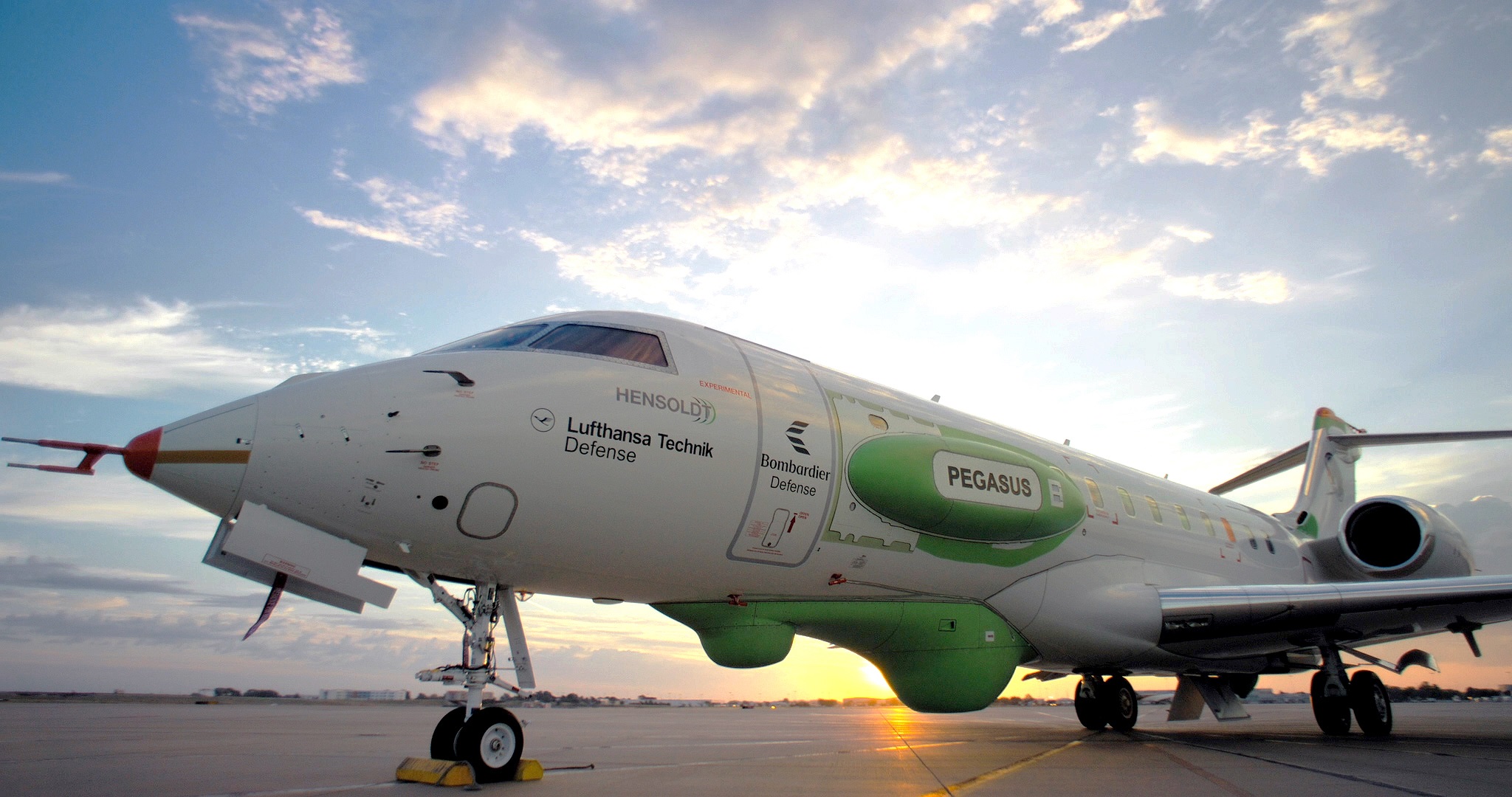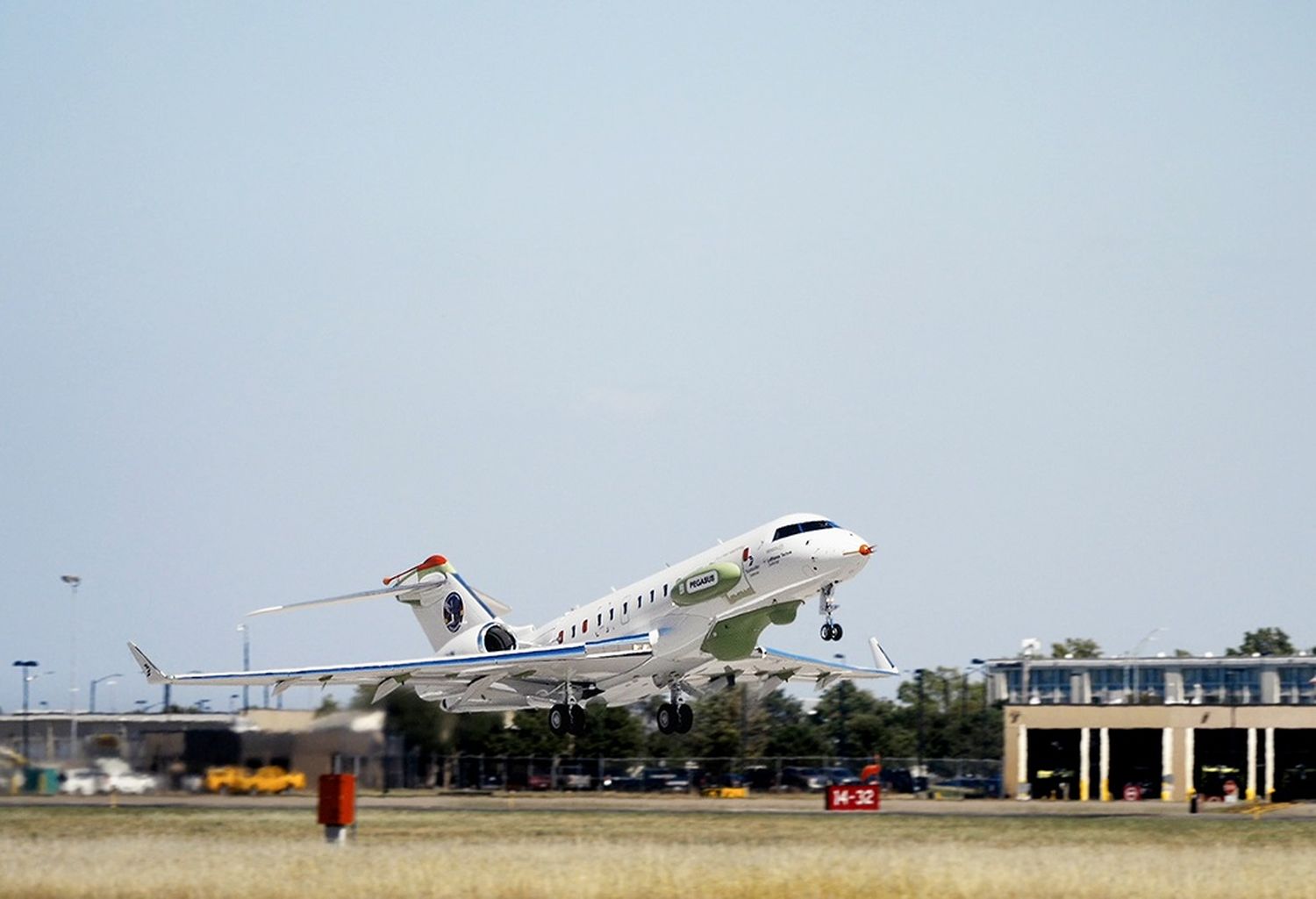First flight of the German Global 6000 PEGASUS, key to Bundeswehr SIGINT intelligence
An important milestone for the future of the German Armed Forces’ (Bundeswehr) signals intelligence capabilities took place today, with the first flight of the Bombardier Global 6000 prototype aircraft, modified in PEGASUS configuration to perform SIGINT missions.
This initial flight, which took place from Bombardier’s Wichita, Kansas facility, was the result of a strategic collaboration between HENSOLDT, Lufthansa Technik Defense and Bombardier Defense, leading companies in the military aviation and defense sector.
“Today marks an important milestone for the PEGASUS programme,” said Dietmar Thelen, Head of Spectrum Dominance Division at HENSOLDT. “With the integration of our Kalætron-Integral system, we are delivering key components that are essential for the ‘reconnaissance of tomorrow».

Led by HENSOLDT, the PEGASUS (Persistent German Airborne Surveillance System) project aims to provide the German armed forces with an advanced mission airborne platform equipped with the Kalætron Integral SIGINT (signals intelligence) system. This state-of-the-art system is designed to perform critical surveillance and reconnaissance missions in an increasingly complex and digitized operational environment.
In June 2021, HENSOLDT was awarded the contract to supply an airborne electronic signals intelligence system on board three Bombardier Global aircraft based on its Kalætron Integral system. Since that award, HENSOLDT, Lufthansa Technik Defense and Bombardier have collaborated closely in a joint design activity.
The PEGASUS program is destined to become a cornerstone of Germany’s signals intelligence capabilities, enabling the Bundeswehr to operate in hostile and complex environments with a superior tactical advantage. With the first flight successfully completed, the next phases of testing and certification are expected to continue smoothly, bringing the system closer to entering active service in the coming years.
See also: Lufthansa Technik expands Defense business with focus on NATO and aircraft conversion
Integration and testing
The team at Bombardier’s Bombardier Flight Test Center (BFTC) in Wichita (USA) is in charge of this phase of the aircraft’s testing. At this center, which has a large contingent of specialized defense personnel, Bombardier pilots are validating key aspects of the program. The tests have successfully demonstrated the Bombardier Global’s ability to meet the critical missions of the German Air Force (Luftwaffe). Structural modification work to adapt the first aircraft was performed at Bombardier Defense’s Wichita base, which is also the site of the initial ground and flight tests.
“This successful first flight is the result of the strong collaboration and shared knowledge between HENSOLDT, Lufthansa Technik Defense, Bombardier Defense and our suppliers to get the modified, high-performing Global 6000 aircraft for the Pegasus program in the air”, noted Steve Patrick, vice president of Bombardier Defense.v
Upon completion of initial testing, each aircraft will be transferred to Lufthansa Technik Defense’s Hamburg facility for additional integration work. The company is also responsible for the overall PEGASUS regulatory certification of the aircraft. The production process for the interior parts has also begun to ensure that the components will be ready for immediate installation when the aircraft arrives in Hamburg.
Michael von Puttkamer, Vice President Special Aircraft Services at Lufthansa Technik, commented enthusiastically: “Seeing the first PEGASUS aircraft taking to the skies bearing the Lufthansa Technik Defense logo fills me with pride and also joyful anticipation, as it brings us one decisive step closer to welcoming this aircraft back at our site.”
About the Kalaetron Integral system
Hensoldt characterizes the Kalaetron Integral system as an airborne SIGINT solution that provides a complete strategic asset for wide area reconnaissance, overcoming the challenges posed by today’s electromagnetic spectrum. The system seamlessly integrates intelligence from both radar (ELINT) and communication (COMINT) signals, providing unprecedented performance across the entire electromagnetic spectrum.
Integrated into a high-performance aircraft such as the Global 6000, the system offers exceptional accuracy, high sensitivity, a wide frequency range and extended on-station time. The combination of superior altitude and long range allows the system to cover vast areas at a safe distance from potential threats. Highly automated workflows are driven by machine learning and AI algorithms, which accelerate decision making while reducing operator workload.


Para comentar, debés estar registradoPor favor, iniciá sesión